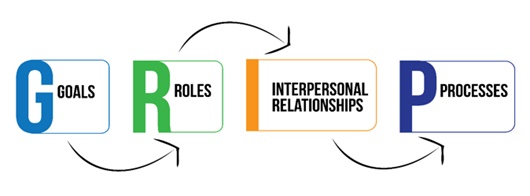Organisation of the Team Programme:
1. Constructing the athletes’ and the coaches’ DISC Profiles (360-degree perspectives are made available for the whole season free of charge)
2. Feedback meeting with the management staff on results, individual feedback for the coaching staff
3. DISC 101 and team building programme
4. Individual feedback for players
5. Team development programme by using the GRIP model
The team building programme is implemented in a complex manner, since team building is not a one-off event, but a process. This approach ensures long-lasting results; the goal is to convert new knowledge into skills, incorporate it into everyday practice, and for coaches and athletes to apply it under competitive conditions. Our methodology is based on the GRIP model. It is supported by integrating the sports application of the DISC behavioural model, a unique tool worldwide; CoachDISC and AthleteDISC Reports. The GRIP model is a performance enhancement tool that can be used by teams in any sport for improvement and boosting efficiency. Ideally, the implementation of the programme begins in the pre-season preparation so that the competition season starts with team-level objectives that match individual goals, a common set of values, rules, precise roles, and sufficient self and social awareness.
The GRIP model contains the critical elements that are essential for high-performing sports teams. GRIP is an acronym, where:
G stands for Goals: Individual and team goals and values
R stands for Roles: The position on the field or court an athlete plays and also their role beyond their playing role.
I stands for Interpersonal relationships: Contacts and interactions.
P stands for Processes.

Experience shows that if any of the four elements is missing or not adequately elaborated, the team concerned will underperform and will not reach their full potential or achieve good results.